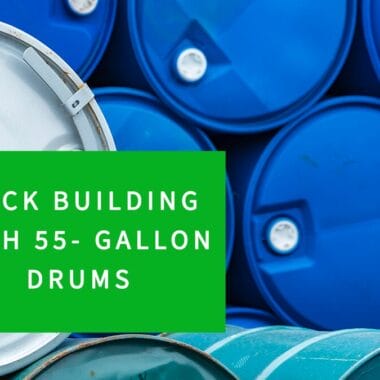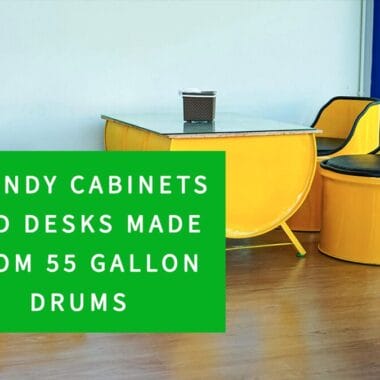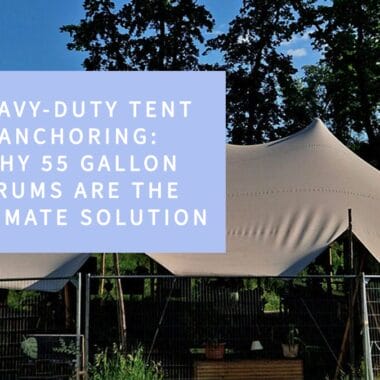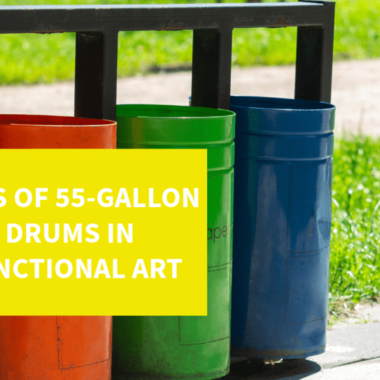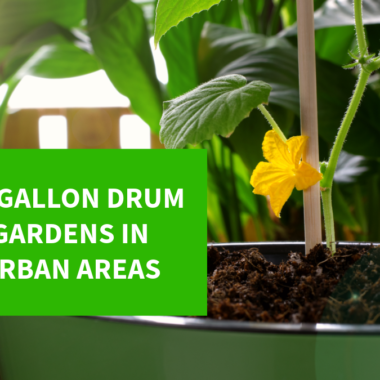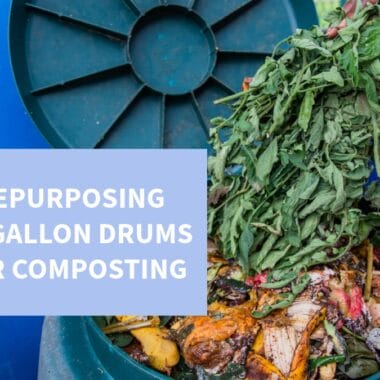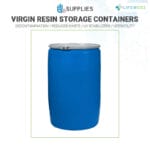55-gallon drums store and transport liquids, solids, and other materials. The distinction between UN-rated and non-UN-rated 55-gallon drums relates to their certification with the United Nations for shipping hazardous materials.
Understanding 55-Gallon Drums and Their Importance
In industries worldwide, 55-gallon drums are universal for storing and transporting many substances, ranging from solvents and chemicals to food products and waste. Their sturdy design, standardized size, and versatility make them fundamental for small and big businesses. 55-gallon drums trace back to the early 20th century when industries required a consolidated container for transporting oil, liquids, and other materials. Over time, the 55-gallon drum has become an industry standard for storage and shipment, ensuring materials are kept in a safe, enclosed container.
Especially in industries like petrochemicals, pharmaceuticals, and agriculture, correctly using 55-gallon drums is not just about convenience but safety, compliance, and environmental responsibility. These 55-gallon drums protect valuable goods, prevent spills of harmful chemicals, and provide a consistent method for industry standards. As industries evolve, 55-gallon plastic and steel drums remain a reliable symbol of safe and efficient material handling.
What Does “UN-Rated” Mean?
The term “UN Rated” in the context of 55-gallon drums refers to the United Nations certification and standard for safe storage and transportation of hazardous materials. The United Nations (UN) authorized specific criteria for 55-gallon drums to ensure they can safely hold and transport a variety of substances, specifically materials that might pose risks to health, safety, or the environment if released.
UN-rated drums have undergone tests to verify their durability, safety, and stability. Depending on the type of material the drum is storing and transporting, these tests can include drop evaluations, leakproof examinations, stack tests, and more. These tests aim to ensure these 55-gallon drums will withstand challenging conditions, such as during transit or in case of incidents.
What are Non-UN-Rated Drums?
Non-UN-rated drums are containers that have not undergone the United Nations’ meticulous testing and certification processes for transporting hazardous substances. In simpler terms, non-UN drums lack the official “stamp of approval” that their UN-rated counterparts possess. This label signifies compliance with international standards for the safe containment of potentially dangerous materials.
While the lack of a UN rating might indicate a lack of legitimacy for specific high-risk tasks, it doesn’t mean these drums are low quality or unsafe for all purposes. Non-UN-rated drums can be well-made, sturdy, and suitable for various applications. They store or transport non-hazardous materials, such as non-toxic liquids, grains, and other harmless substances.
When to Use Non-UN-Rated Drums
Non-UN-rated drums might be suitable if you’re storing or transporting materials that are not considered hazardous by regulatory standards. Because they haven’t been subjected to the expensive testing and certification process of UN-rated drums, non-UN-rated drums can be more affordable. This makes them a cost-effective choice for businesses that don’t need the specific safety assurances a UN rating provides.
For general storage needs in warehouses, factories, or farms, where the drum’s contents aren’t transported across distances or borders, non-UN-rated drums can be an ideal choice. In cases where materials are being moved over short distances without stringent regulatory oversight, these drums may suffice.
If there’s ever uncertainty about the nature of the materials, especially regarding potential hazards, it’s best to remain safe and choose UN-rated containers. Using the correct type of 55-gallon drum ensures safety and helps businesses abide by local, national, and international regulations.
Key Critical Differences Between UN-Rated and Non-UN-Rated Drums
Understanding the differences between UN-rated and non-UN-rated drums is crucial for businesses and individuals handling, storing, or transporting materials. These differences primarily center around the certification, testing, usage, and cost of 55-gallon drums.
United Nations (UN) Certification
Un-rated drums are certified by the United Nations to meet strict standards for storing and transporting hazardous materials. Non-UN-rated drums do not have this UN certification and have not undergone tests for the UN’s criteria for dangerous materials.
UN Testing Protocols
UN-rated drums are prone to strict testing procedures, including drop tests, leakproof tests, stacking tests, and others. These tests ensure that the drum can handle various challenges and stressors without compromising the safety of its contents. While non-UN-rated drums might undergo testing for durability or specific uses, they do not meet the comprehensive testing criteria established by the UN for hazardous material containment.
The UN Marking and Labeling
UN-rated drums have specific markings that begin with the “UN” symbol, followed by codes. These codes provide detailed information about the drum’s material, the types of materials it’s certified to hold, and other related data. This code offers essential information for shippers, handlers, and regulatory authorities, guaranteeing proper transportation of hazardous materials. Non-UN-rated drums do not have UN-specific markings and, depending on the manufacturer, may or may not have any labeling.
Usage and Compliance
UN-rated drums have the authorization to transport hazardous materials as per international and domestic regulations. Using drums authorized by the UN helps businesses stay compliant and avoid legal or regulatory complications. Non-UN-rated drums are useful for storing or transporting non-hazardous materials. Non-UN drums lack the mandate for transporting regulated hazardous materials.
Cost of UN-Rated and Non-UN-Rated Drums
UN-rated drums are generally more expensive due to the UN’s testing and certification processes that ensure their reliability and safety. Non-UN-rated drums are more cost-effective since they haven’t undergone the same level of rigorous testing and certification.
Safety Implications
UN-rated drums minimize the risks of transporting hazardous substances, offering higher safety assurance. While non-UN-rated drums might be safe for many applications, they don’t provide the safety and security of UN-rated drums when handling hazardous materials.
Choosing Between Non-UN-Rated and UN-Rated 55 Gallon Drums
Understanding the distinction between UN-rated and non-UN-rated 55-gallon drums is paramount for material storage and transportation. While similar in appearance, UN and non-UN 55-gallon drums serve different purposes. When safety, compliance, and environmental responsibility are at stake, choosing between UN and non-UN drums is crucial. Whether handling potentially hazardous chemicals or storing non-toxic substances, purchasing the right drum is a matter of efficiency and attentiveness. The choice between UN-rated and non-UN-rated drums largely depends on the type of materials, regulatory requirements, and safety considerations. Wearing personal protective equipment (PPE) when storing substances in 55-gallon drums is crucial when handling hazardous materials. Always ensure you’re using the correct type of 55-gallon drum for the job to prioritize safety and compliance.
Reference:
United Nations Digital Library, 2001. Standards for steel drums.





